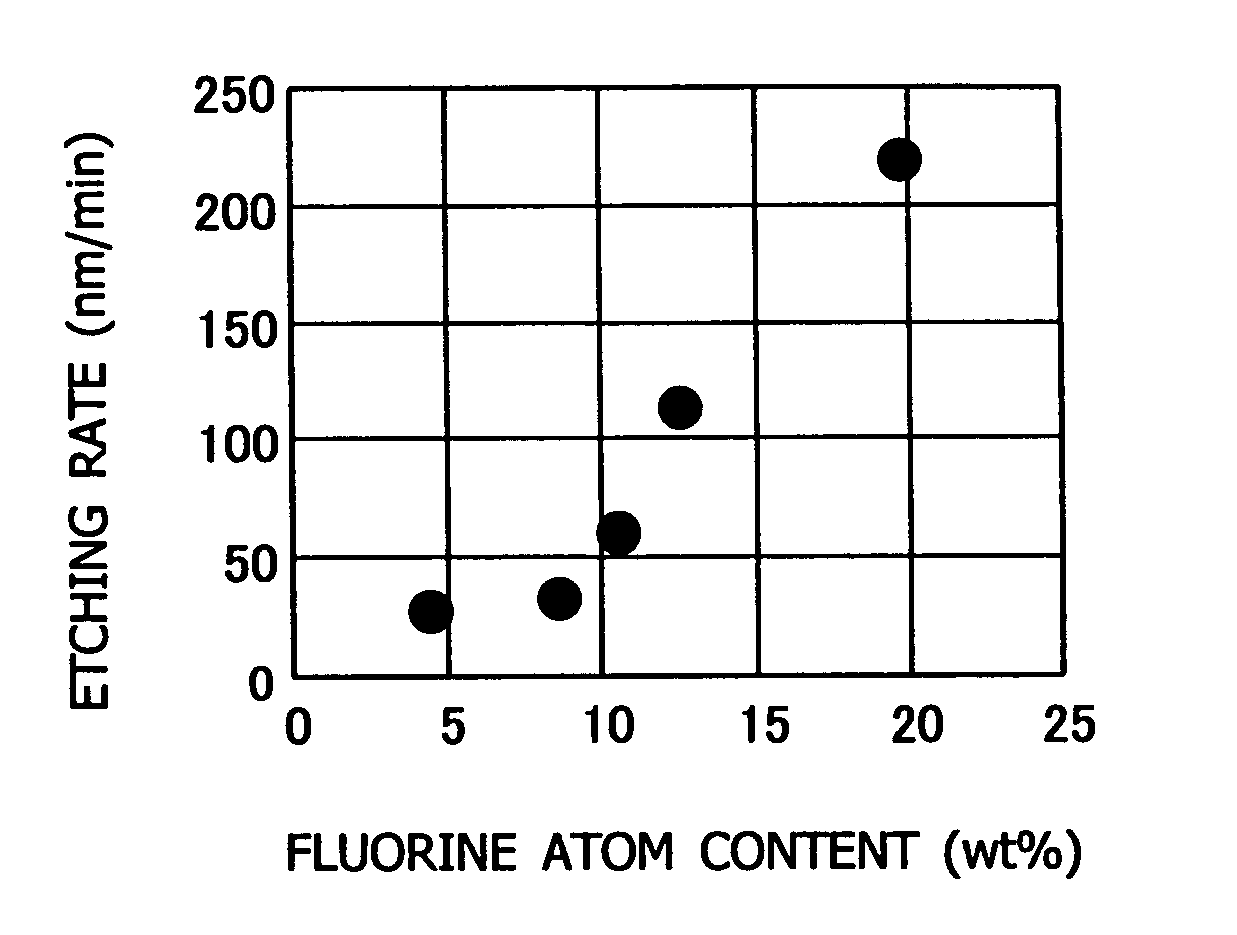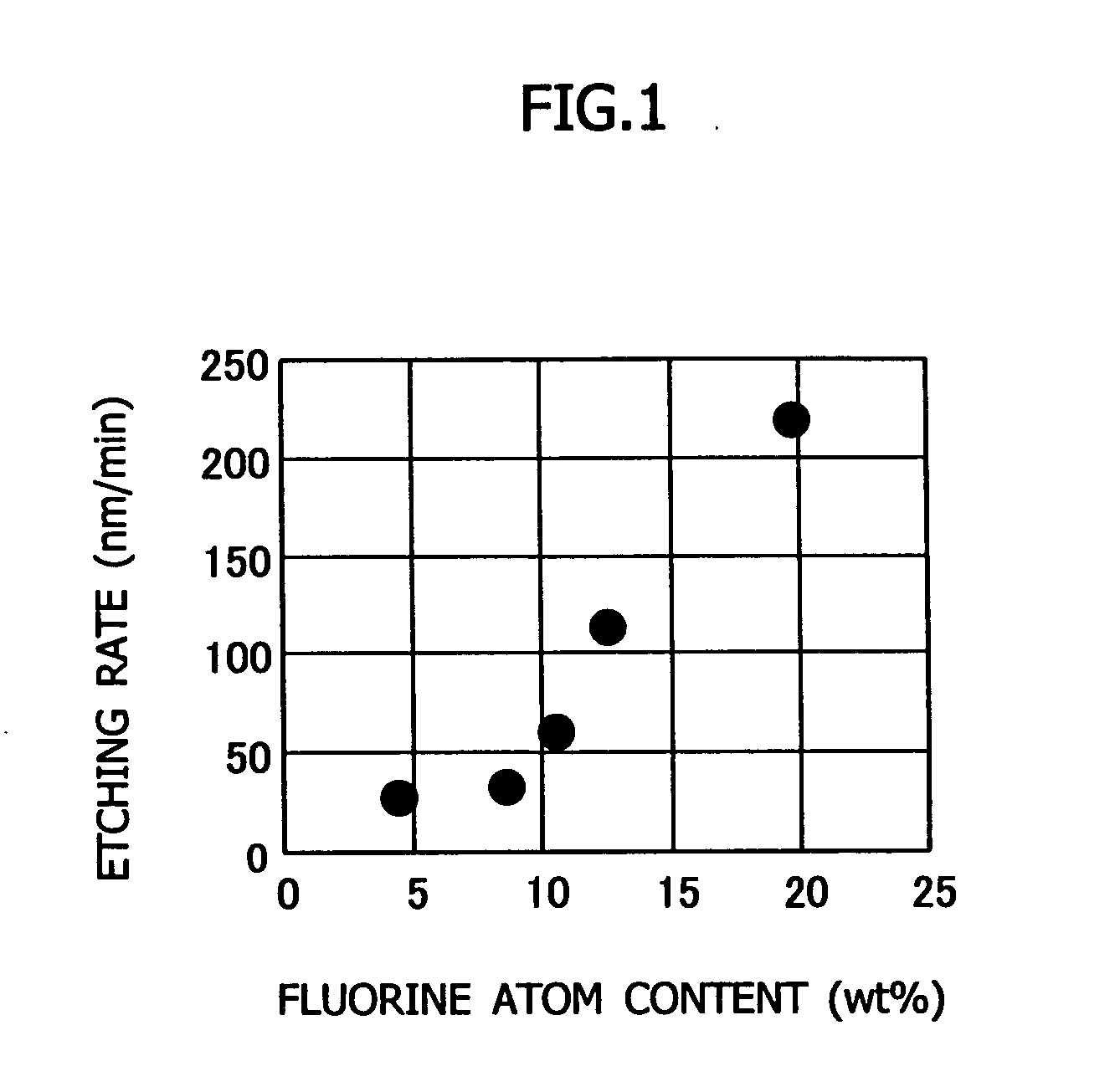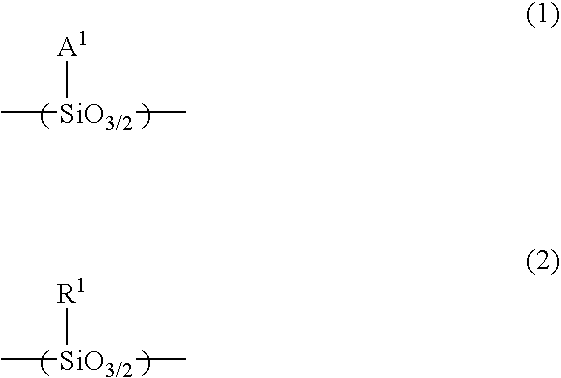Radiation-sensitive polymer composition and pattern forming method using the same
- Summary
- Abstract
- Description
- Claims
- Application Information
AI Technical Summary
Benefits of technology
Problems solved by technology
Method used
Image
Examples
synthesis example 1
In a three-necked flask equipped with a stirrer, a reflux condenser and a thermometer, 18.5 g of a silane compound represented by formula (A) below, 5.8 g of a silane compound represented by formula (B) below, 190 g of tetrahydrofuran (THF), 95 g of water and 0.22 g of acetic acid were charged. While stirring, they were reacted at 30° C. for 17 hours. After the organic solvent was evaporated off, acetic acid (200 ml) was added. The mixture was neutralized with ammonia water and then washed with water. Until the reaction mixture became neutral, washing with water was repeated. The polymer was obtained after removal of the organic phase under reduced pressure, placed in a flask, and then heated at 170° C. for 14 hours. Consequently, a polymer (15.1 g) having a weight-average molecular weight (Mw) of 2600 was obtained.
PUM
| Property | Measurement | Unit |
|---|---|---|
| Nanoscale particle size | aaaaa | aaaaa |
| Nanoscale particle size | aaaaa | aaaaa |
| Nanoscale particle size | aaaaa | aaaaa |
Abstract
Description
Claims
Application Information
 Login to View More
Login to View More - R&D
- Intellectual Property
- Life Sciences
- Materials
- Tech Scout
- Unparalleled Data Quality
- Higher Quality Content
- 60% Fewer Hallucinations
Browse by: Latest US Patents, China's latest patents, Technical Efficacy Thesaurus, Application Domain, Technology Topic, Popular Technical Reports.
© 2025 PatSnap. All rights reserved.Legal|Privacy policy|Modern Slavery Act Transparency Statement|Sitemap|About US| Contact US: help@patsnap.com



